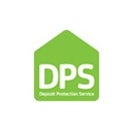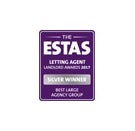Belvoir can provide a simple step by step guide on how to maximize rental ‘yields’
This year could see one of the greatest ever surges in the thriving buy to let investment market, as more and more people are viewing property as a viable way to provide financial security in retirement.
Any buy to let investor is more likely to succeed if they adopt a professional approach.
In this current economic climate, buy to let investors have the potential to achieve much higher returns than by putting their funds into a traditional bank account with very low interest rates.
Whilst we are not in a position to offer financial advice, we can share our knowledge and experience of the local property market. We also work very closely with regulated financial advisors and wealth management experts who can be called upon for specific guidance on aspects of tax and financial planning.
The following brief guide explains the simple steps a buy to let investor needs to take to work out potential ‘yields’.
What is a Gross Rental Yield?
- This is the expected annual rental income of a property expressed as a percentage of the total property value.
- Whilst not being wholly accurate in terms of what you receive, it can provide a good yardstick for comparison and increases the likelihood of a successful venture.
How is it calculated?
- Firstly, establish a probable monthly rent – this can be done by looking at similar properties in the area. If you’re unsure, ask at your local Belvoir office.
- From this, calculate the likely yearly rent – just multiply the monthly rent x 12.
- Next, divide the yearly rent figure by the purchase price of the property.
- And finally, multiply this by 100 to get a percentage. This is the Gross Rental Yield.
Once you’ve calculated the gross yield look at how this figure compares with other property averages – both locally and nationally.
We advise all landlords to conduct gross rental yield calculations on a variety of properties before making a purchase. “The first property you see may be the one that tempts you into the sector but it may not always be the best investment. Buy-to-let can be very profitable but only if researched thoroughly and treated like any other business opportunity”.
What is the Net Rental Yield?
- This is a calculation of the total rent received minus the expenses that the property incurs expressed as a percentage of the total property value.
- If your expense costs are accurate this is a very easy way to monitor the profitability of your purchase.
How is it calculated?
Firstly, take the monthly rental amount, which will be listed in the tenancy agreement for the property.
- Multiply this by 12 to establish a yearly income.
- Then, subtract any percentage of the year that the property may be unoccupied (if applicable). Next, multiply
- Add together the yearly outgoing costs – e.g. insurance premiums, replacement of fixtures and fittings, periodical property redecoration, maintenance, ground rent (if the property is leasehold) and the lettings agency costs, etc.
- Then, subtract the total outgoings from the yearly income to determine the net income.
- Lastly, divide your net income by the total property value and multiply this by 100 to get a percentage figure.
This is the Net Rental Yield – the return on your investment.
And finally…
Once the net rental yield is established the investor needs to compare it with any initial target or expectations set – and discuss the outcome with an expert.
At Belvoir we always strive to achieve the best returns for our landlords and we can offer friendly and expert advice on how to maximize yields.
Prospective landlords keen to know more about any aspect of buy to let investment can contact us for a free, initial consultation and assessment of their goals.










